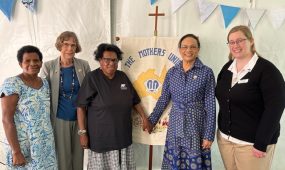Youth homelessness a growing crisis in Qld
News
42 per cent of people experiencing homelessness in Australia are under 25: That’s 28,000 young people who feel the hunger, isolation and fear that come with homelessness every night

“I woke up one morning to find mum had been arrested and I was in the house all by myself. I couldn’t afford the rent and I didn’t want to give up school.” Sally, now 25.
It’s a confronting and sobering statistic – 42 per cent of people experiencing homelessness in Australia are under 25.
That’s 28,000 young people who feel the hunger, isolation and fear that come with homelessness every night. More than 1100 of them are in Brisbane, however this number is believed to be vastly underestimated.1
For many, leaving home is the only choice. It’s estimated that 70 per cent leave to escape family violence, child abuse or family breakdown.2
This week, while we celebrate the achievements and unlimited potential of our best and brightest during Youth Week, it’s important to remember the young people who aren’t thriving, and who need support from their community to get back on track.
Anglicare’s Insync Youth Homelessness service provides one of the few crisis accommodation options for under 18s across Brisbane’s southern suburbs, Logan and Redlands. Last year it provided 2,600 nights of crisis accommodation and 5,400 nights of transitional accommodation.
However Insync’s staff believe there is dire need for more crisis accommodation across the region.
Manager Rees Maddren, with 25 years of experience working in the sector, says demand is growing but a critical lack of crisis accommodation is forcing young people onto the streets or friend’s couches.
“We currently have crisis and transitional accommodation at Mount Gravatt, Greenslopes, Beenleigh and Cleveland and on any given night could have 24 young people living with us,” Mr Maddren said.
Advertisement
“But we know there are many more young people out there that urgently need support.
“Private rentals are clearly unaffordable for someone on Newstart allowance, so what’s left is couch surfing, short-term crisis accommodation or unregistered rooming houses in the suburbs where rooms are let individually at exploitative rents.
“Many of them end up sleeping rough or crashing on people’s couches, which is just unsustainable and sometimes not safe.”
Mr Maddren said more funding for early intervention programs and crisis accommodation is urgently needed, together with an increase in the Newstart allowance.
A success story
Sally, 25, is one of Insync’s success stories. She entered Insync’s crisis accommodation as a 16-year-old after her mother’s relationship breakdown and imprisonment left her on her own.
It’s no surprise she ended up dealing with mental health challenges.
“I woke up one morning to find mum had been arrested and I was in the house all by myself. Even though I had a part-time job, I couldn’t afford the rent and I didn’t want to give up school,” she said.
Advertisement
However with support, Sally achieved her goals, gaining qualifications that led to her employment in a local hospital.
Now as a lead tenant in Insync’s transitional accommodation, her deep understanding of youth homelessness helps her mentor the other young people in the house.
“When I was younger, Insync was there to help me when I had nothing else. And living there gave me a sense of having a family that cared and wanted to help,” she said.
Tara Adermann, who coordinates two of Insync’s crisis houses, says family breakdown and violence are the major reasons that young people leave home.
“There can often be drug and alcohol abuse at home too – habits which the young people may pick up as an escape from the trauma they endure,” she said.
Ms Adermann says Insync’s aim is helping young people to stabilise their lives and work towards their goals around education and employment, mental health, family relationships and more.
“Someone can come in with nothing but the clothes on their back. We provide shelter, food clothing and try to make the house their home,” she said.
“We want to support them to become independent so they can move into stable housing or return home if that is suitable.
“We work with young people in a respectful way, focusing on the talents and strengths they have, and get them ready for the real world.”
1. ABS Census 2016
2. Rosenthal et. al. (2006). Why do homeless young people leave home? Australia New Zealand Journal of Public Health.






